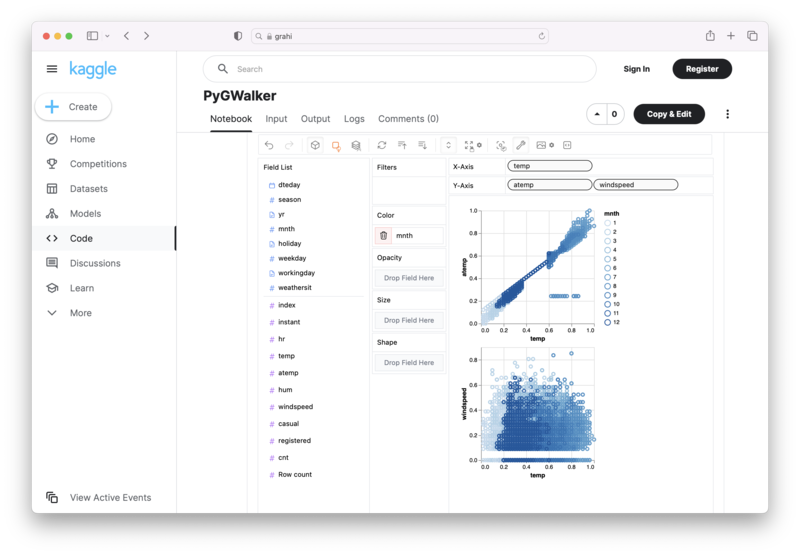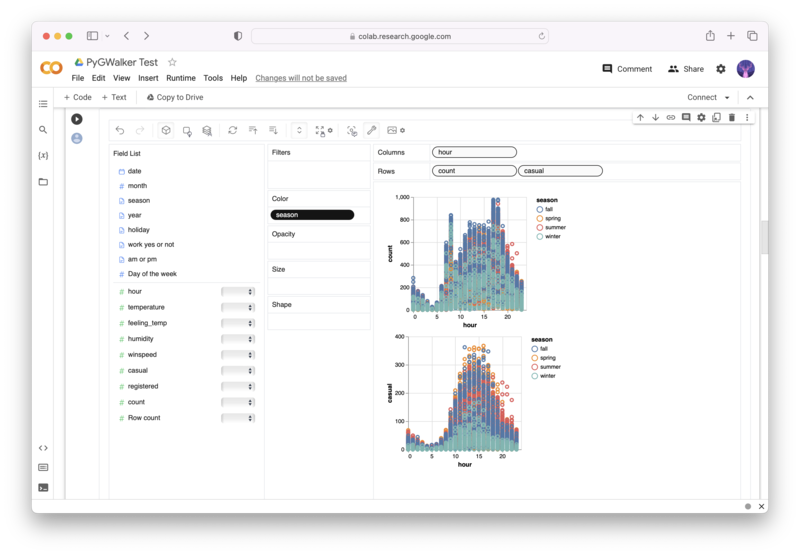Pandas Where: Harnessing the Power of Pandas to Manage Null Values
Published on
Working with data is at the core of what we do. Raw data, however, can often be messy, incomplete, and full of null values that need to be dealt with. Without proper handling, null values can cause issues when performing data analysis or machine learning tasks. Luckily, with the Pandas library in Python, we can quickly and effectively manage null values in our data.
In this article, we’ll explore the Pandas where() function and various other techniques for handling null values in Pandas. We’ll cover how to identify and handle missing data in a Pandas DataFrame, strategies for working with null values, best practices for managing missing values, and much more.
Want to quickly create Data Visualizations in Python?
PyGWalker is an Open Source Python Project that can help speed up the data analysis and visualization workflow directly within a Jupyter Notebook-based environments.
PyGWalker (opens in a new tab) turns your Pandas Dataframe (or Polars Dataframe) into a visual UI where you can drag and drop variables to create graphs with ease. Simply use the following code:
pip install pygwalker
import pygwalker as pyg
gwalker = pyg.walk(df)You can run PyGWalker right now with these online notebooks:
And, don't forget to give us a ⭐️ on GitHub!
Identifying and Handling Missing Data in a Pandas DataFrame
One of the most common tasks we need to perform when working with data is to check for missing data. Pandas provides several ways to identify null values, including isnull() and notnull(), which return boolean values to indicate whether any of the values in the DataFrame are null or not. We can use these functions to quickly find out if there are any missing values in our data.
For example, let’s say we have a DataFrame with several columns, some of which contain missing values.
import pandas as pd
import numpy as np
data = {'name': ['Alice', 'Bob', 'Charlie'],
'age': [25, np.nan, 30],
'gender': ['F', 'M', 'M'],
'income': [50000, 60000, np.nan]}
df = pd.DataFrame(data)To check for missing values in our DataFrame, we can apply the isnull() function to the entire DataFrame.
print(df.isnull())This will return a DataFrame with the same shape as the original DataFrame, where True represents a null value and False represents a non-null value.
To count the number of missing values in each column of our DataFrame, we can use the sum() method after applying the isnull() function.
print(df.isnull().sum())This will return a Series object where the index is the column names and the values are the number of missing values in each column.
We can also drop rows or columns with null values using the dropna() method. This method removes any row or column that contains at least one null value.
df.dropna()Alternatively, we can replace null values with a specific value using the fillna() function.
df.fillna(0)These are just a few examples of the methods available in Pandas for identifying and handling null values. For a comprehensive list, please refer to the Pandas documentation.
Working With Null Values in Pandas
Null values can be a challenge when performing data analysis or machine learning tasks. However, there are many strategies we can use to work with null values effectively. Here are a few of them:
Interpolation
One common technique for dealing with missing data is interpolation. Interpolation is a statistical technique that estimates missing values based on observed values in nearby rows. In Pandas, we can use the interpolate() method to perform interpolation on our DataFrame.
df.interpolate()Filling Missing Values
Another strategy for working with null values is filling the missing values with a constant or a value computed from the remaining data. We can use the fillna() method to fill null values with a specific value.
df.fillna(0)Alternatively, we can fill null values with the mean, mode, or median of the remaining data.
df.fillna(df.mean())Dropping Missing Values
Dropping missing values is a common strategy for handling null values. We can use the dropna() method to remove all rows that contain one or more null values.
df.dropna()We can also drop columns that contain null values.
df.dropna(axis=1)Imputation
Imputation is a technique for estimating missing values based on observed data. In Pandas, we can use the scikit-learn package to perform imputation.
from sklearn.impute import SimpleImputer
imp = SimpleImputer(missing_values=np.nan, strategy='mean')
df[['age', 'income']] = imp.fit_transform(df[['age', 'income']])These are just a few examples of the many strategies available for working with null values in Pandas. The appropriate strategy depends on the specific problem and the nature of the missing data.
Best Practices for Managing Missing Values in Pandas
Dealing with missing data can be a challenge, but there are some best practices that can help. Here are a few tips for managing null values in Pandas:
- Always check for missing data before performing any analysis.
- Use descriptive statistics to understand the distribution of the data and identify outliers.
- Consider different strategies for handling missing data, such as interpolation, imputation, or dropping missing values.
- Be aware of the potential consequences of different strategies and how they may affect the analysis.
- Use data visualization tools to gain insight into the nature and distribution of the data.
- Document the missing values and how they were handled in the analysis.
By following these best practices, we can better manage null values in our data and effectively perform data analysis or machine learning tasks.
Conclusion
Null values can be a challenge when working with data, but with Pandas, we have access to a powerful set of tools for identifying and handling missing data. In this article, we explored the Pandas where() function and various other techniques and strategies for working with null values in Pandas. By applying these techniques and following best practices, we can better manage null values in our data and perform effective data analysis and machine learning tasks.


